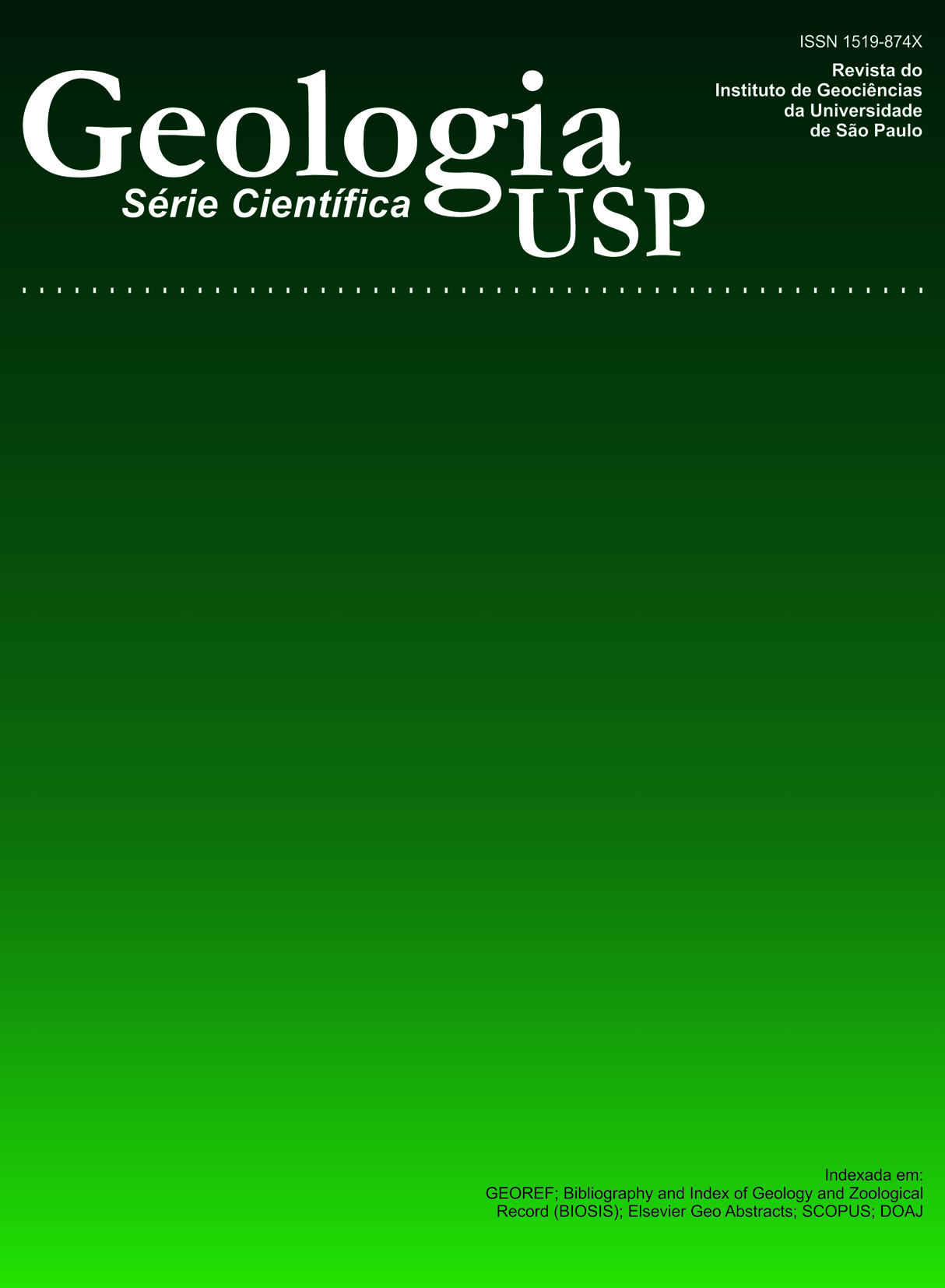Petrogenetic and tectonic evolution of the Cariris Velhos event in the Afogados da Ingazeira region (PE), Alto Pajeú terrane, Borborema Province
DOI:
https://doi.org/10.5327/Z1519-874X2011000200006Keywords:
Northeast Brazil, Borborema Province, Alto Pajeú terrane, Cariris Velhos event, Tonian-Ediacaran meta-volcano-sedimentary beltAbstract
The Tonian Cariris Velhos event was studied in the area around Afogados da Ingazeira town, Pernambuco State, Northeast Brazil, which is situated within the Alto Pajeú terrane, a Tonian-Ediacaran composite domain of the Borborema Province. The exposed rocks belong to the São Caetano Complex, which is formed of biotite-muscovite paragneisses and quartz-feldspathic gneisses, derived from arkosic or felsic volcanic protoliths, with marble and quartzite intercalations. The deformation started with a D1/D2 thrusting episode, when metamorphism ranged from greenschist to amphibolite facies, and was accompanied by emplacement of orthogneiss sheets. The subsequent episode, the D3 phase, had an extensional character and was marked by intrusion of small metadiorite dikes, which were strongly transposed by the D4 phase, a new episode of transcurrent deformation. The main structure of the D4 phase is the Afogados da Ingazeira shear zone (ZCAI), which Ediacaran age was well constrained by the associated Solidão granite, dating from 574 ± 54 Ma. A geochemical study of the metasedimentary rocks shows that the protoliths of the paragneisses located in the southeastern part of the ZCAI are greywackes, whereas those of the northwestern part are greywackes, lithic sandstones and arkoses, although the REE patterns of these samples normalized to NASC (North American Shale Composite) show minor differences between them. These metasedimentary rocks have geochemical signatures and patterns of synorogenic sediments compatible with island and continental arc sources. The geochemical patterns of the orthogneisses are also consistent with a magmatic arc environment, the same conclusion reached by other authors with respect to the metavolcanic rocks of the Alto Pajeú terrane. The occurrence of the pre-transcurrent D3 extensional episode suggests that the D1/D2 thrusting deformation and associated metamorphism may be related to orogenic processes, pointing to the existence of the Cariris Velhos orogeny.Downloads
Downloads
Published
2011-08-01
Issue
Section
Articles
License
Authors who publish in this journal shall comply with the following terms:
- Authors keep their copyright and grant to Geologia USP: Série Científica the right of first publication, with the paper under the Creative Commons BY-NC-SA license (summary of the license: https://creativecommons.org/licenses/by-nc-sa/4.0 | full text of the license: https://creativecommons.org/licenses/by-nc-sa/4.0/legalcode) that allows the non-commercial sharing of the paper and granting the proper copyrights of the first publication in this journal.
- Authors are authorized to take additional contracts separately, for non-exclusive distribution of the version of the paper published in this journal (publish in institutional repository or as a book chapter), granting the proper copyrights of first publication in this journal.
- Authors are allowed and encouraged to publish and distribute their paper online (in institutional repositories or their personal page) at any point before or during the editorial process, since this can generate productive changes as well as increase the impact and citation of the published paper (See The effect of Open Access and downloads on citation impact).
How to Cite
Sales, A. de O., Santos, E. J. dos, Lima, E. S. de, Santos, L. C. M. de L., & Neves, B. B. de B. (2011). Petrogenetic and tectonic evolution of the Cariris Velhos event in the Afogados da Ingazeira region (PE), Alto Pajeú terrane, Borborema Province . Geologia USP. Série Científica, 11(2), 101-121. https://doi.org/10.5327/Z1519-874X2011000200006





